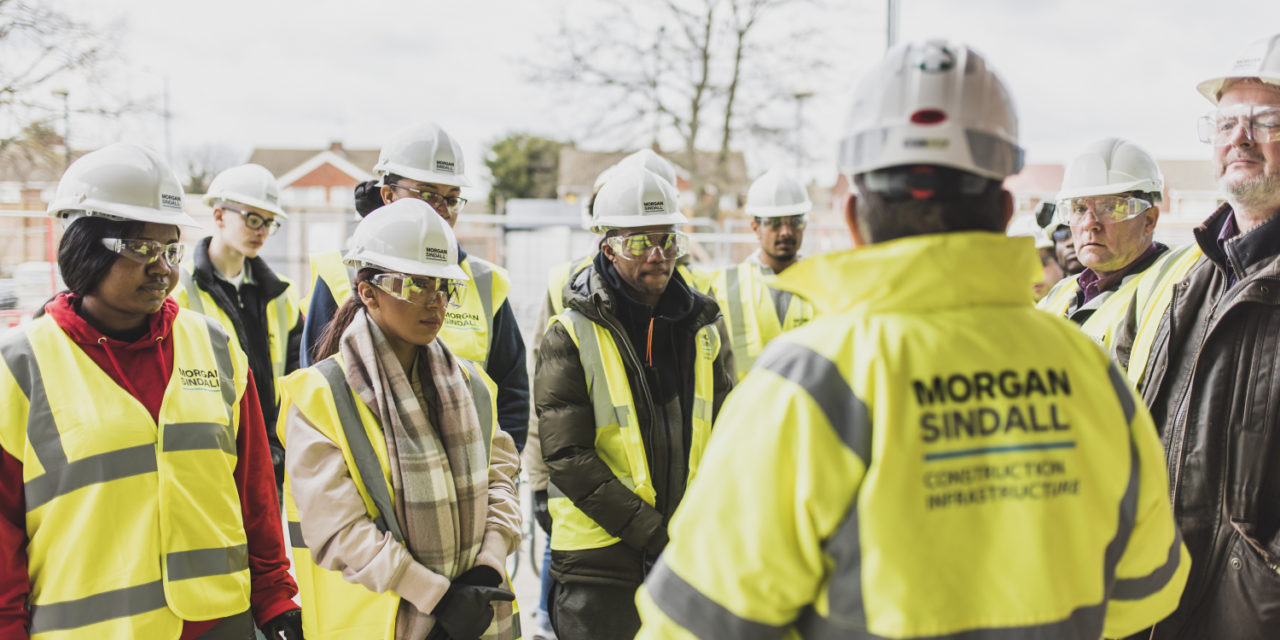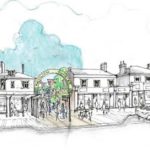The role social value and localism has to play in supporting the climate emergency was the subject of a national webinar convened by Morgan Sindall Construction in collaboration with BE Networking, Legal & General Capital, and data analysis consultancy Simetrica-Jacobs.
The event began with a discussion on the evolution of social value and the increased importance placed on it.
Early adopters of social value will remember when the phrase invited little more than a paragraph in a construction case study – referring almost exclusively to work apprenticeships and the local jobs economy.
But over the past decade, policies around social impact have taken on new meaning within the industry. Pre-pandemic, the burning platform was the green agenda with Greta Thunberg and Extinction Rebellion fronting the nation’s headlines in their fight for future net-zero carbon emissions.
While the Covid-19 crisis may have derailed these discussions as we prepare to move on from 2020 into a cleaner, brighter future, sustainable procurement strategies are now firmly engrained into the business operations of most progressive main contractors.
Eco-friendly building materials and operational carbon have gone from nice-to-have to an imperative in modern construction.
This September, the Government announced changes to its 2012 Social Value Act, aiming to ensure that all major procurements must demonstrate an explicit evaluation of social value within projects, where it was otherwise on an opt-in basis.
The Government’s initiative in modernising the Social Value Act was welcomed by all of the webinar participants, who saw the change as the perfect opportunity to harness the momentum around environmental issues and champion a green building agenda.
However, the feeling remained that local council involvement in the design stage, alongside community-led consultations, was the best method for ensuring the whole value chain worked for specific local needs.
“As a regional, decentralised business, our offices are local by design and we often have a permanent presence in many communities. We have seen first-hand that local authorities have huge potential to enable deeper and more meaningful social value through procurement because, after all, they are the key stakeholder in that community”, said Louise, Head of Social Value and Sustainability at Morgan Sindall Construction.
Fostering relationships with local partners was therefore encouraged for identifying social value opportunities and all of the speakers agreed the earlier it was done, the better.
“Early and open collaboration is key to identifying social value which delivers meaningful impact in a community – because no two places will have the same needs or wants,” said Damon Brown, Portfolio Construction Manager at L&G Capital.
Given current pressures on public services, however, attendee opinions were mixed on the subject of local versus major infrastructure. There were cautions that while the importance of localism could not be denied, a mix of options is necessary for delivering nationwide benefits.
Talk then turned to the challenge of identifying areas of best impact. Wellbeing drivers that were discussed included connectivity, green skills and pollution. The ability to quantify the impact through financial value was universally recognised as key.
“It’s important for developers that we can measure the value of say, reduced carbon,” said Ed Dallas, Senior Economist at Simetrica-Jacobs. “By monetising the impact we can compare different social value initiatives like-for-like, giving us the ability to weigh up interventions against each other.”
But where could this data come from? Strong sources are obviously required; datasets which could stand up to scrutiny. Ed pointed to examples such as the ONS Understanding Society Survey, which can allow planning officers to understand a community through various sustainable indicators. These can then inform on design.
“It’s about looking directly at what’s going on in communities,” said Louise. “We have standard tools that get applied to common themes like biodiversity, all in the context of local impact. That way, we can understand the full picture of pre-existing issues, and the positive ways we can reverse or offset them.”
Factoring in qualitative data was considered crucial when measuring social value, given that many added benefits centred on community health and wellbeing. As Ed noted: “Quantitative is how we make the business case, but qualitative aspects are just as important to show what we’ve achieved.”
This in turn highlighted a similar issue around longevity of social value changes. How can companies measure the impact of a project before it has been fully felt when many are designing and building projects that rarely span more than five years at most?
“Any true social value project needs to leave a sustainable legacy behind it,” said Damon. “We’re currently piloting a strategy aimed at driving green skills and decarbonisation for local councils. Once we locate the gaps, we can then inform our training providers to create that link between investment and the councils’ needs, creating a self-fulfilling network.”
Engaging small and medium sized local businesses was identified as crucial in upholding these legacies past a building’s lifecycle. Inspiring case studies were cited by the attendees as key for influencing senior leaders and securing buy-in.
“At Morgan Sindall Construction, we created a framework from bronze to platinum”, Louise said. “By meeting a shopping list of options, projects can go higher up the scale – it’s been really powerful and has de-mystified the process as well as improving our performance.”
Social value was identified to have undergone some major changes in the last few years, but the group held back on celebrating success. As the coronavirus pandemic has highlighted, there is no real end in sight when it comes to unlocking a positive social outcome for communities; only new and exciting challenges.
Louise commented: “I keep thinking my work is done, but there is so much more to do. The focus on social value, inclusion and the climate emergency means exciting times are ahead – now, it’s about ensuring we have evidence and data to communicate that message and secure a long-term future for sustainable construction.”
Five key takeaways to move the agenda forward
- True and early collaboration | Integration of procurement, the authority, the community and the whole value chain at the earliest stage to design for local needs
- Find and fill | Identify the gaps and specific social value needs first so we can then build targeted strategies to fill them
- Data integrity | Be led by the data; ensure it is accurate and will stand up to scrutiny – only then can we make judgements about what is effective
- Legacy | Social value must continue beyond projects – siloed initiatives which finish upon handover will not have the impact required
- An iterative journey | As society and industry changes, we must adapt and evolve to create different solutions – we’ve come so far, yet much work still lies ahead
For a full copy of the white paper, or to express an interest in taking part in future webinars or round tables, please contact Crissie.Gizzi@morgansindall.com.
© Thames Tap (powered by ukpropertyforums.com).
Sign up to receive your free weekly Thames Tap newsletter here.

















It looks like you’ve misspelled the word “Wellcome” on your website. I thought you would like to know :). Silly mistakes can ruin your site’s credibility. I’ve used a tool called SpellScan.com in the past to keep mistakes off of my website.
-Kyle
Kyle – Many thanks. We shall have a look and review.
Your site looks great but I did notice that the word “Wellcome” appears to be spelled incorrectly. I saw a couple small issues like this. I thought you would like to know!
In case you wanted to fix it, in the past we’ve used services from a websites like HelloSpell.com to keep our site error-free.